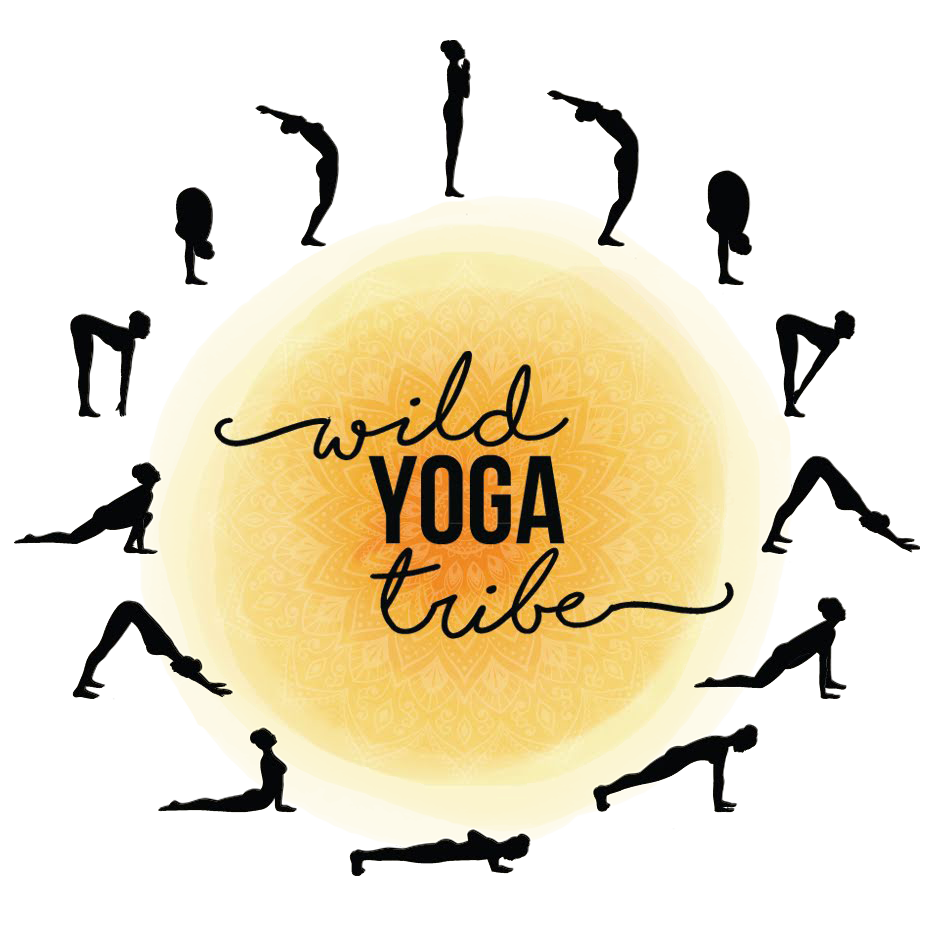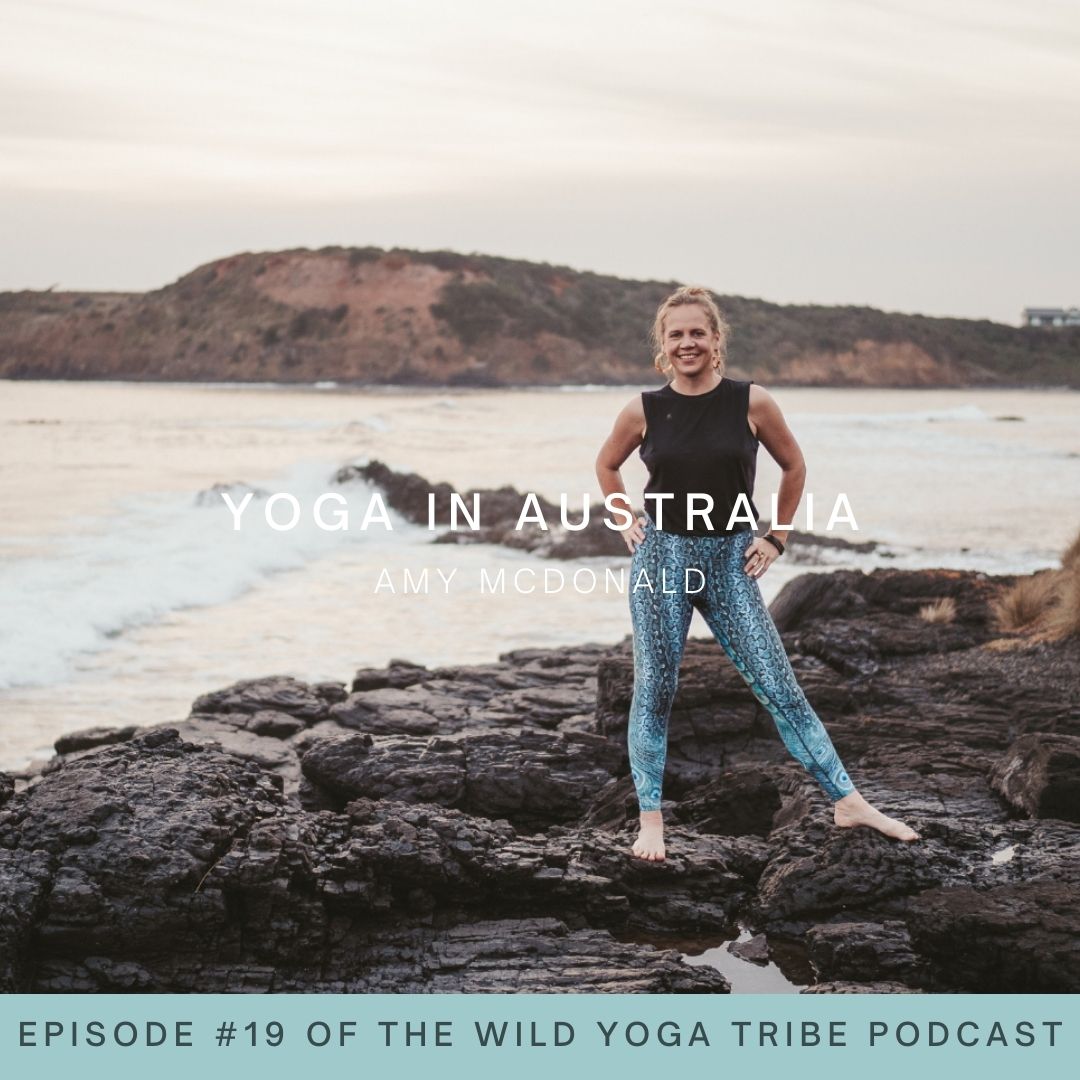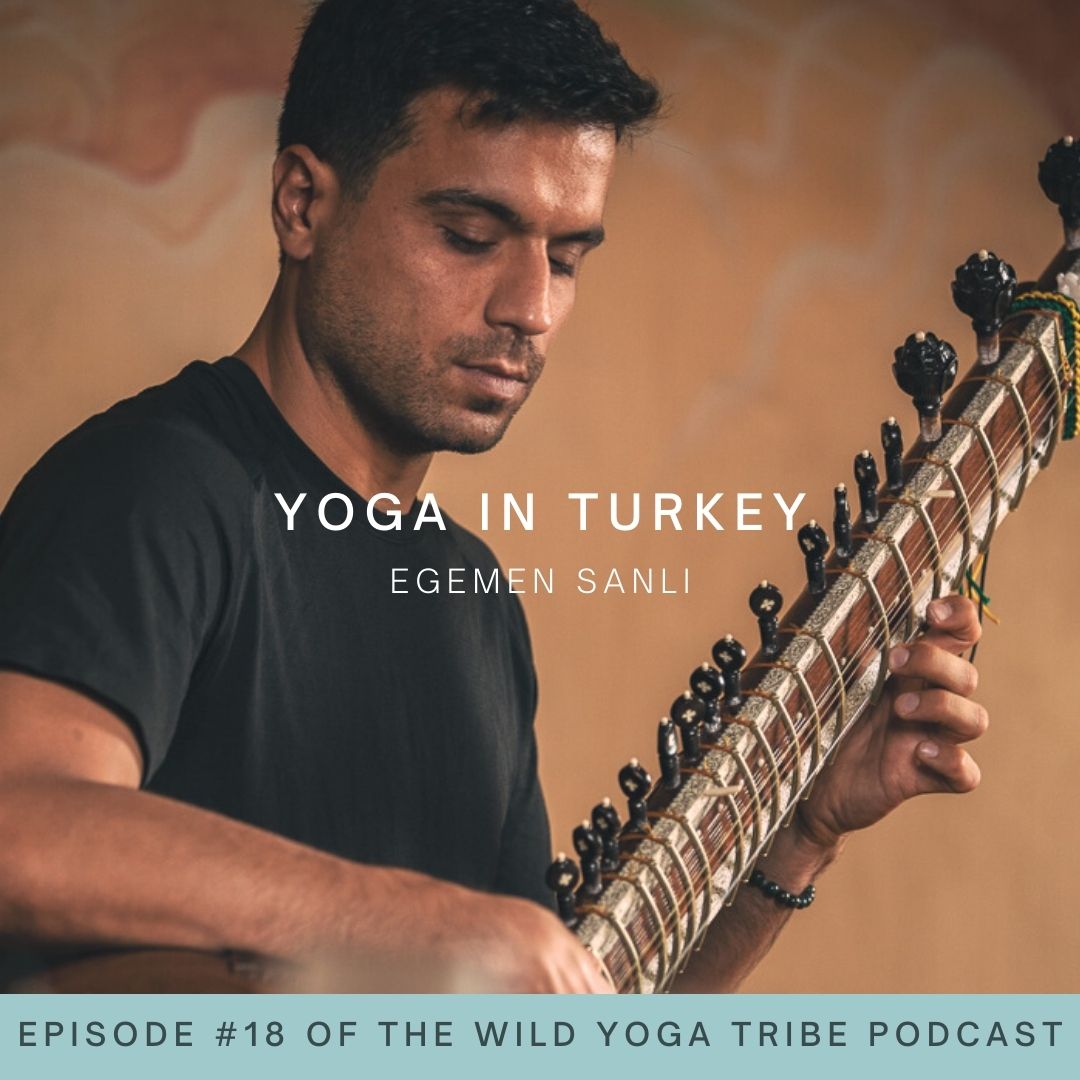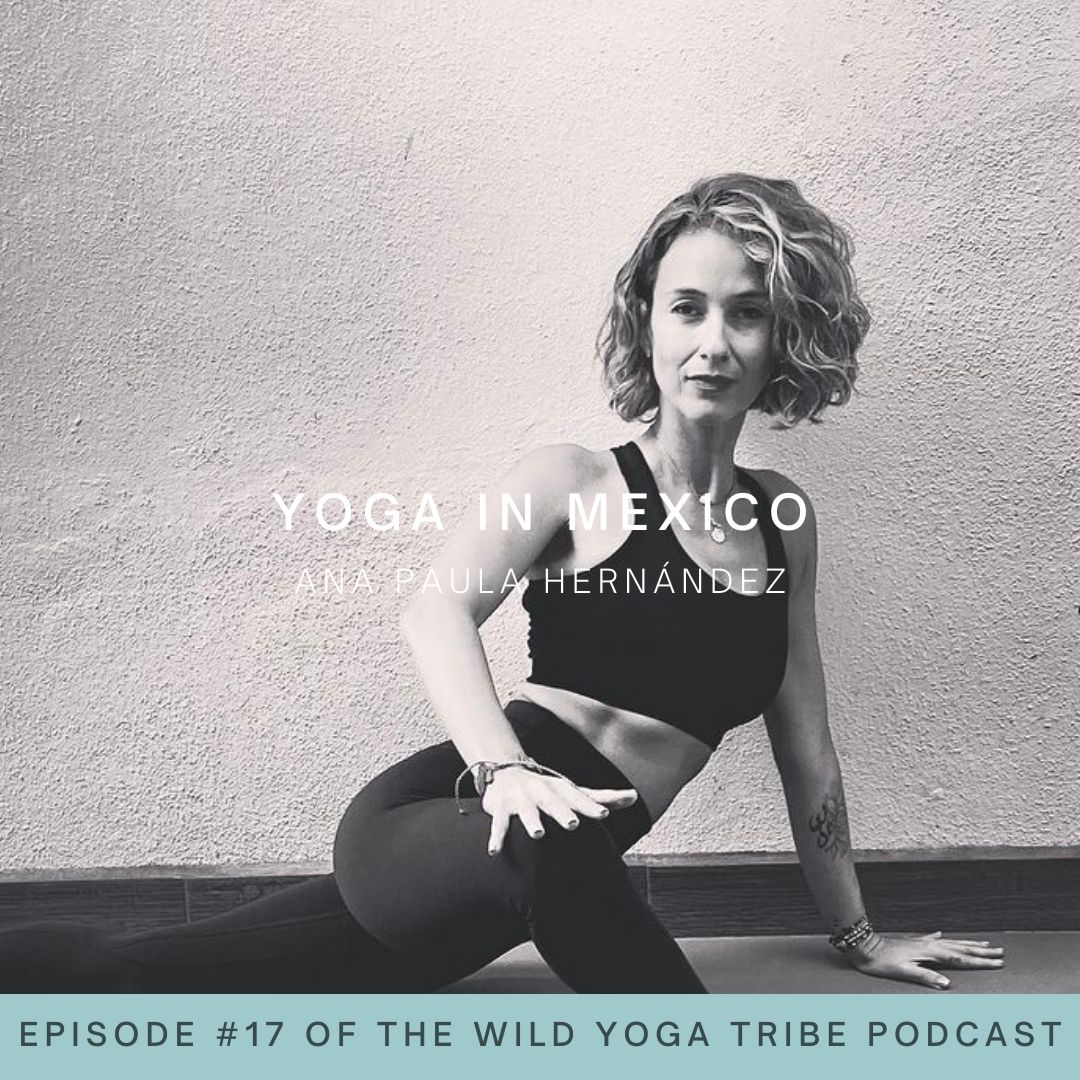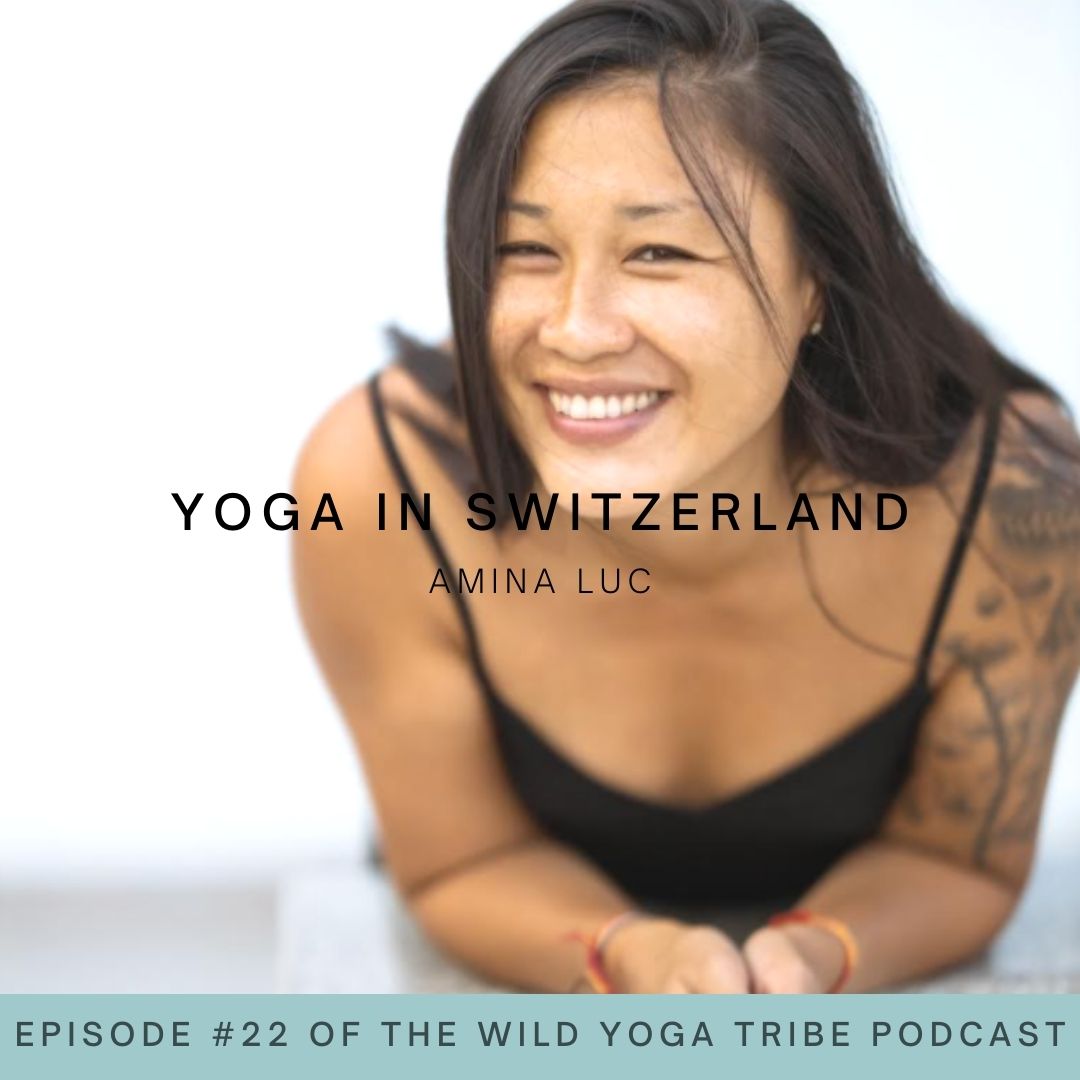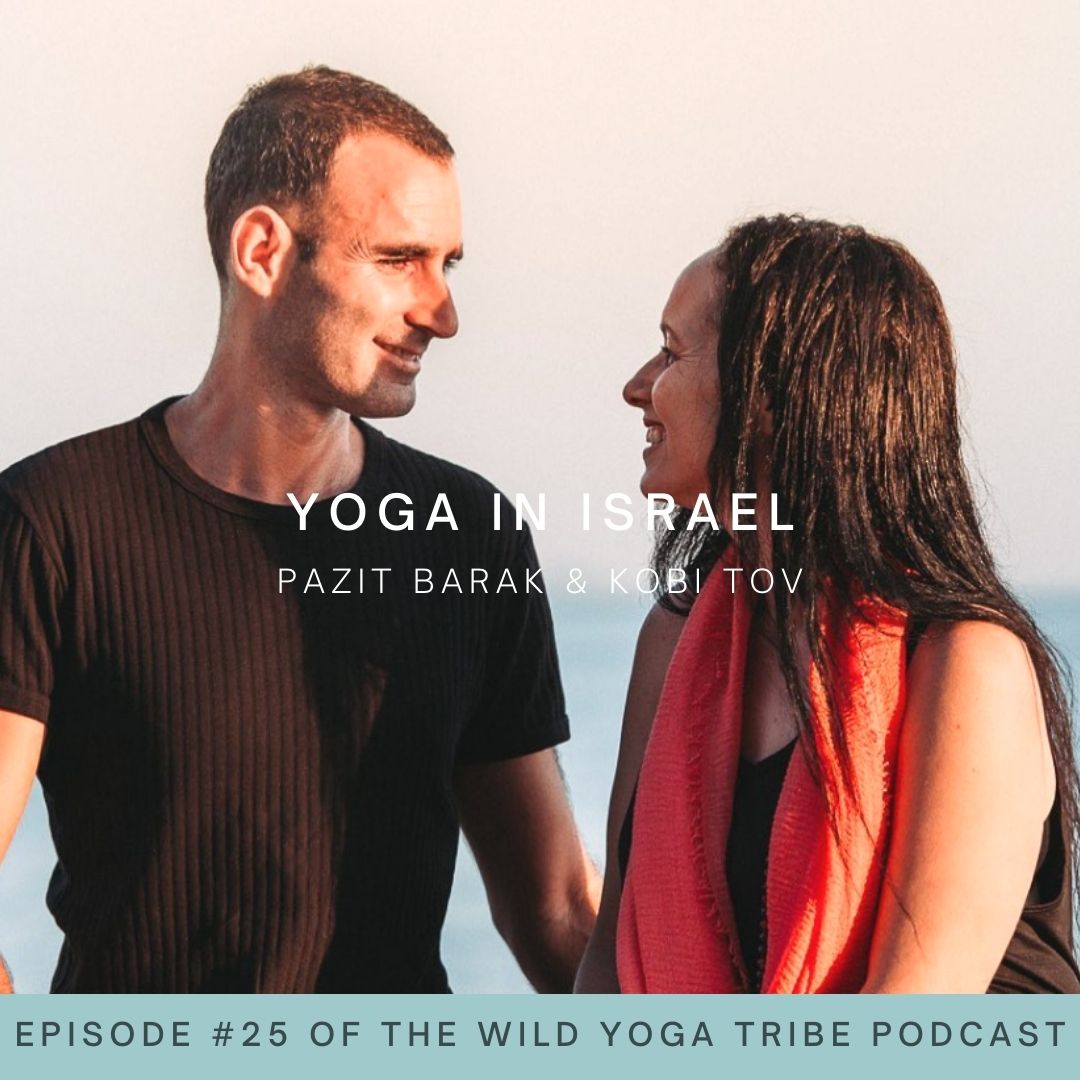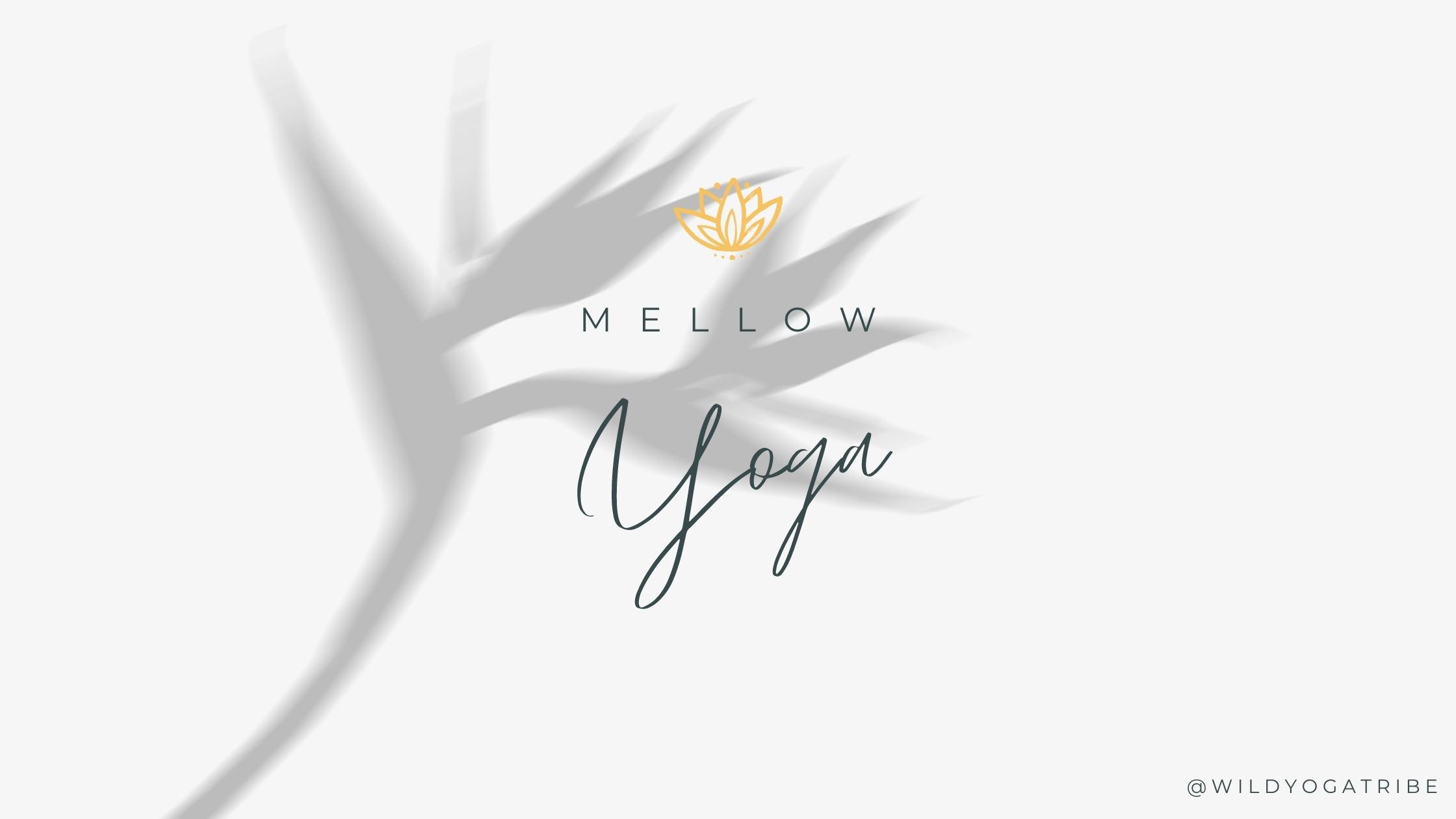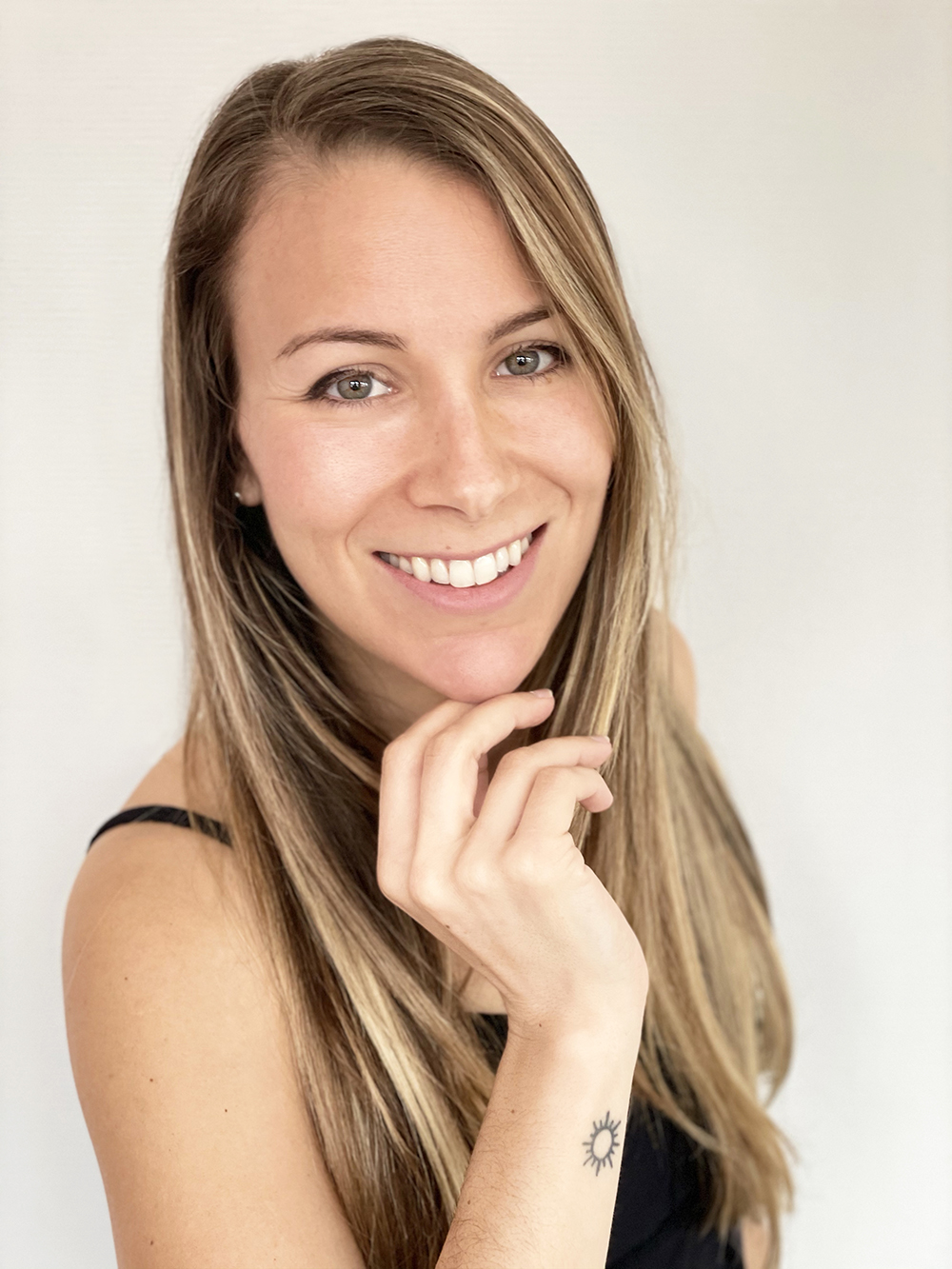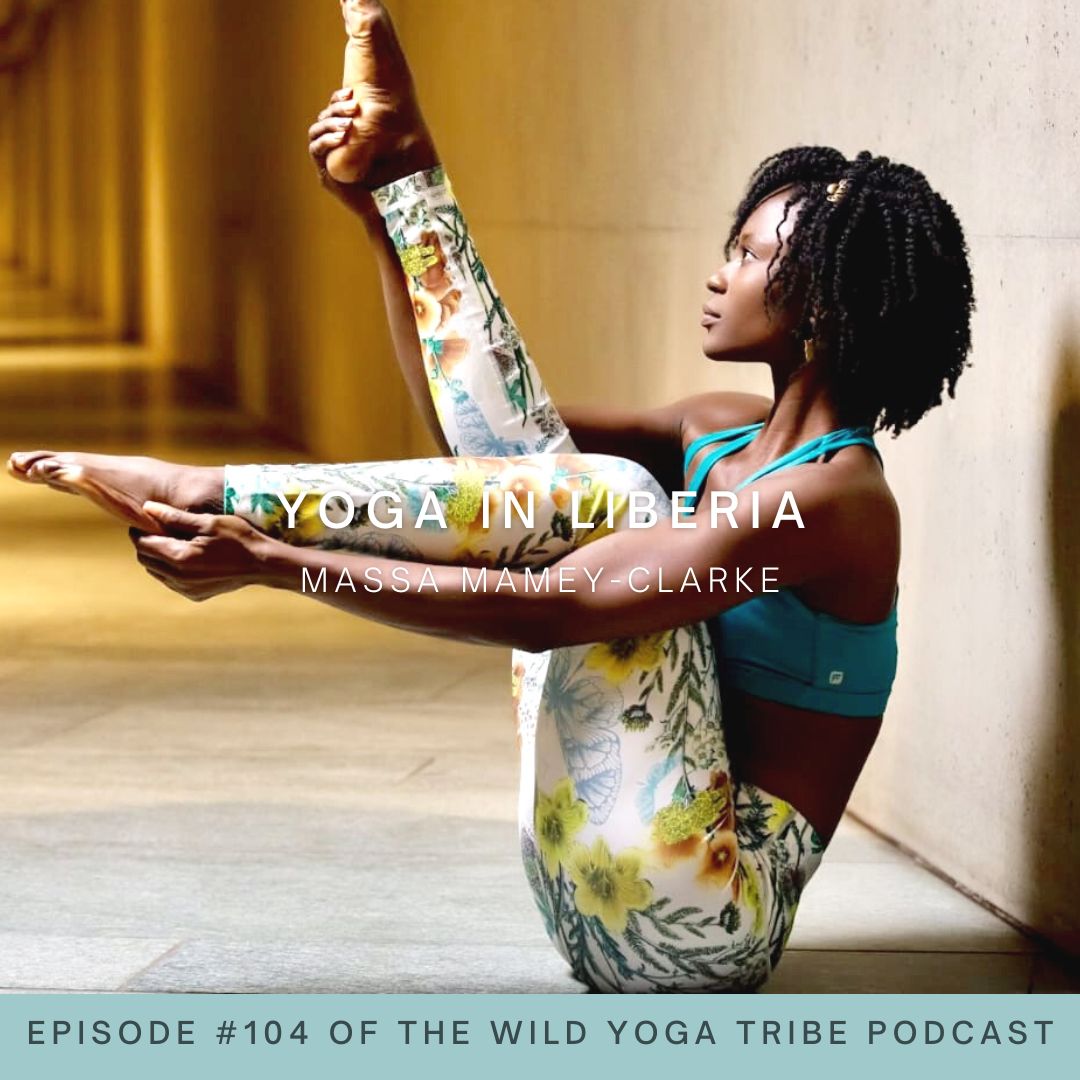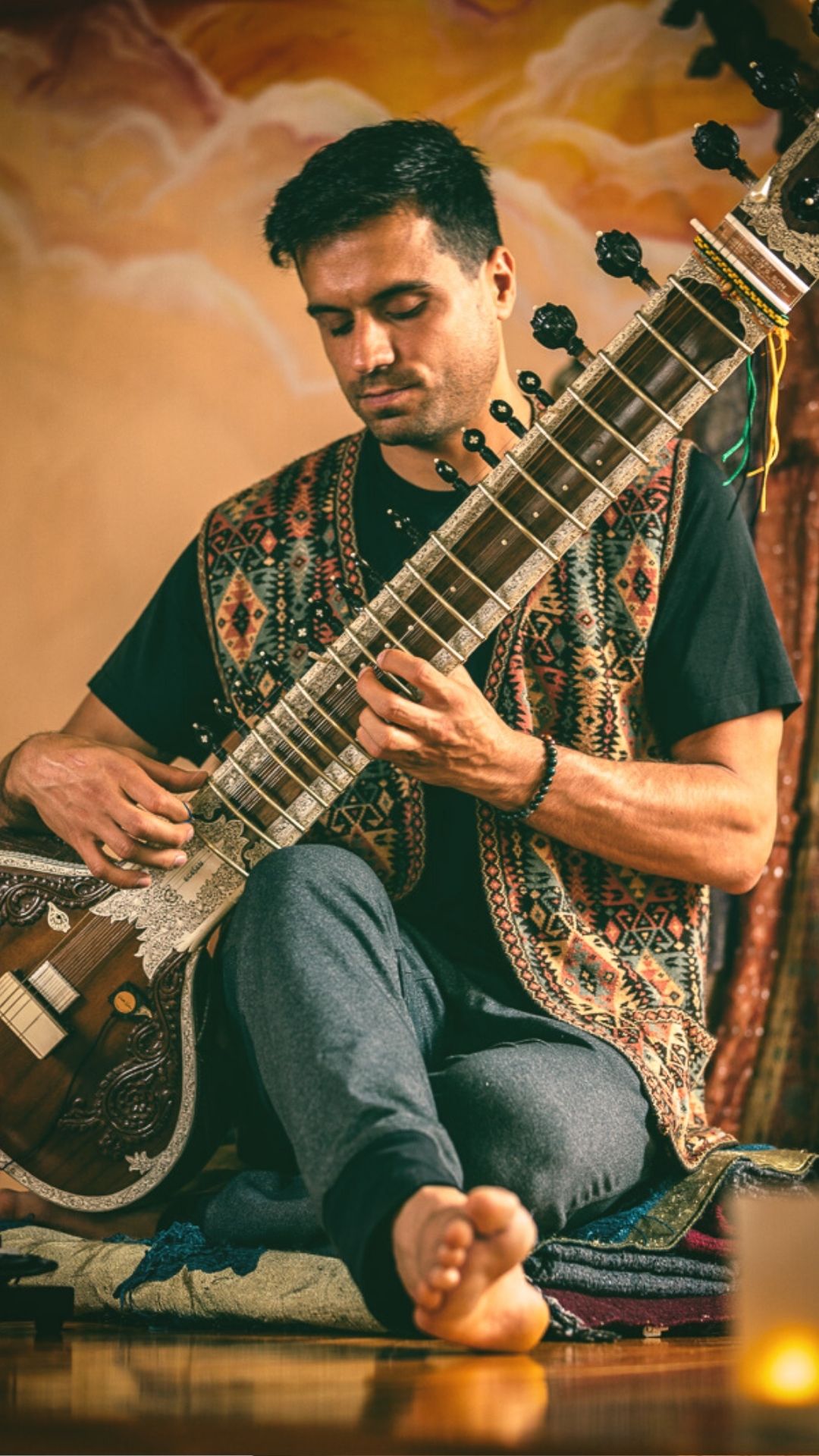
EPISODE #18 – YOGA IN TURKEY
Meet Egemen Sanli
Meet Egemen Sanli, a yoga teacher from Turkey who teaches us all about yoga in Turkey! Ege teaches us about mystical yoga music and how yoga and music relate. Welcome to yoga in Turkey!
Wild Yoga Tribe Podcast Episode #18 – Mystical Yoga Music – Yoga in Turkey with Egemen Sanli
Welcome to Episode #18 of the Wild Yoga Tribe Podcast! This week, I welcome Egemen Sanli onto the show. He is a yoga teacher from Turkey who is also an improvisational yoga musician who works at Google. As he explains in this episode, he is a Googler and also a Yoggler— the term that people who work at Google and practice Yoga call themselves!
We talked about the the progression of yoga in Turkey from asana to subtler levels, about sufism, and about the pioneers of yoga in Istanbul. We also talked all about Ege’s path not just of yoga but of music as well, and how his improvisational yoga music becomes the heartbeat of a yoga class, a dynamic and alive element of yoga classes that can help even more in unifying and harmonizing a room full of yoga practitioners.
If you want to take an inside peek into Ege’s journey to yoga—which actually was through music—as well as a look behind the scenes of Google tune into this podcast episode!
Yoga in Turkey here we go!
Tell me more about Egemen Sanli…
Egemen Sanli—who goes by Ege—is a yoga teacher from Turkey. He is also a modern dervish traveling to find his own voice within world music, carrying the flag of his Turkish roots as a musician. Ege plays the sitar alongside other ethnic instruments (shamisen, saz, hang and handpan drums, banjo, flutes) and is able to bring out the mystic and invigorating qualities of all. He utilizes beats, loops, and tanpura machines to compliment his joyful improvisations based on traditional Eastern ragas. Ege lives in San Francisco and performs regularly in the Bay Area, he is also a certified yoga teacher from Turkey.
What to expect in the Yoga In Turkey episode of the Wild Yoga Tribe Podcast
Ege came to yoga through music. The first time he entered a yoga studio, which was Laughing Lotus Yoga in New York City, it was with his instruments in hand. He played music for years before he actually, as Ege recalls, “rolled out his mat and came into downward facing dog.”
He fell in love with yoga during his SmartFlow classes with Annie Carpenter. It was after she called him out for his intense shoulder tension by tapping him on the shoulders saying, “I don’t want that in my class.” It was that moment that he was hooked.
In terms of yoga in Turkey, Ege returns to Turkey each year to teach yoga and to play improvisational yoga music at yoga studios and shalas there. Working with a pioneer of yoga in Istanbul, Cihangir Yoga and with Chris Chavez. We talked about Sufism, Rumi, and whirling dervishes. In case you wanted the link to the yoga and whirling dervish retreats, click here.
Ege and I talked extensively about yoga and music, and the quality that live music adds to asana practices. We even talked about how improvisational music is like vinyasa sequencing! In this podcast you can expect to learn not just about Yoga in Turkey and but so much more!
For the skimmers – What’s in the Turkey episode?
- Entering the yoga scene through music
- The progression of yoga in Turkey from asana to subtler levels
- Improvisational Music and Vinyasa Sequencing
- Sufism and Rumi
- What live music adds to asana practice
Favorite quote from Egemen Sanli
“For the first time I was seeing music as a practice on its own that just like yoga can just engulf all of your life.”
What’s in the Yoga in Turkey episode?
Feel like skimming?
Entering the yoga scene through music
The progression of yoga in Turkey from asana to subtler levels
Improvisational Music and Vinyasa Sequencing
Sufism and Rumi
What live music adds to asana practice
Connect with Egemen Sanli
Website: https://egemensanli.com
Instagram: https://www.instagram.com/egesan/
Youtube: https://www.youtube.com/egesan6
Spotify: https://open.spotify.com/artist/39Hxxiq33beoXGP8uKjbXi
iTunes: https://music.apple.com/us/artist/egemen-sanli/356530309
Facebook: https://www.facebook.com/turksitar
SoundCloud: https://soundcloud.com/egesan
Want more?
https://wildyogatribe.com/thepodcast/
Everything you need is just one click away! Check out all the resources here: https://linktr.ee/wildyogatribe
PODCAST TRANSCRIPTION
Read + Reflect + Respond
Wild Yoga Tribe Podcast Episode #18 – Mystical Yoga Music – Yoga in Turkey with Egemen Sanli
[00:00:00] Lily Allen-Duenas: Welcome. Welcome. Welcome to the Wild Yoga Tribe podcast. I’m your host, Lily Allen-Duenas. Together we’ll talk about the world of yoga and we’ll talk to people from around the world. Join us for authentic conversations about the global yoga ecosystem and we’ll cover yoga philosophies and methodologies along the way.
[00:00:28] Inhale. Exhale. We’re about to dive in.
[00:00:41] Today, I am thrilled to welcome Ege onto the podcast. So Egeman Sanli is a yoga teacher from Turkey, who’s now located back home for me back home in Northern California. He’s actually in Oakland, in the bay area and he is not [00:01:00] just a yoga teacher. He’s also.
[00:01:06] The modern dervish and world music, carrying the flag of his Turkish roots as a musician along the way, Ege plays the sitar alongside other ethnic instruments, including the handpan drums and flutes. And he brings out this amazing mystic and invigorating quality out of all of these instruments that he does play.
[00:01:30] So I hope you are as excited to hear Ege, his story as I am, and to hear about his journey. So please join me in welcoming him onto the podcast. Thank you Ege so much for being here.
[00:01:43] Egeman Sanli: Thank you so much for having me. It’s a pleasure to talk about yoga and music.
[00:01:53] Lily Allen-Duenas: So our philosophies and what we’re feeling and our journeys. And so I’d love to just start from the top [00:02:00] and ask you Ege, how you got started doing yoga?
How Egeman got started doing Yoga
[00:02:03] Egeman Sanli: How did I get started doing yoga? It’s just like many things. It’s a little bit of a long story, but I’m going to keep it short. I went into a yoga studio first to play music.
[00:02:15] To play mindset sitar back in 2009, I want to say, and I remember the studio, it was Laughing Lotus in New York city. I responded to wait, maybe they responded to my Craigslist ad and they said, “Hey, we have this yoga class Friday night live, 10:00 PM to 12:00 PM. 12:00 AM on a Friday. And we bring musicians you want to come play.”
[00:02:41] So that was the first time I was in a yoga studio. And for many years after that, my interaction with the yoga world has been through music. So I’ve played in yoga classes for many years before [00:03:00] I actually rolled out my mat and came to a downward facing dog. So that happened many years later when I moved to California. I just wanted to grow my understanding of what happens in a yoga class.
[00:03:13] How does sequencing work? What types of yoga are there as a means to open myself up as a musician, meet more teachers who would want me to come play for them. So I had different goals when I first started going through yoga classes and learning about them, but it was very quick that I started realizing that there’s a lot there for me to explore.
[00:03:44] So probably less than a year after I started doing yoga, I decided that I want to do my 200 hour training and become an instructor.[00:04:00]
[00:04:02] Lily Allen-Duenas: You played music for years in yoga studios before you actually rolled out your mat and came into a downward facing dog and made me laugh. I think that is coming through. Coming through into yoga from this not outside perspective. You’re not an outsider. You’re a creative, spiritual and passionate person.
[00:04:23] Do you feel like when you stepped foot into that yoga studio at the very first time or the first few times, did you feel at all confused or alienated or at ill at ease or did you immediately get into the flow of the energy that a yoga room creates?
First time stepping into a yoga studio
[00:04:38] Egeman Sanli: Probably a mix of a lot of those, but I grew up with sports.
[00:04:45] I played a lot of sports in my early twenties. I was a fighter. I’ve done kickboxing. Kickboxing, muay thai. So I’ve always been a very physical person. When I first and I was still fighting when I started doing yoga. And I [00:05:00] remember my first or second class. I went to my teacher and Annie Carpenter’s class back in the yoga three days here. Yoga three used to be a really big studio chain in the San Francisco area.
[00:05:15] They are bankrupt now because of the pandemic and they don’t exist anymore. But so I remember going intoAnnie Carpenter’s class and I think we were in warrior two and I had my shoulders all the way up to my ears, just holding everything so tight. She came over to me and started poking at my shoulders and said, “I don’t want this in my class.
[00:05:41] Don’t bring this in my class.” And that was the moment for me. I was hooked because that reminded me a lot of the, tough love, but also joyful, funny coaches I had throughout the years, I’ve worked with a lot of like coaches from Thailand and they’re so [00:06:00] cheerful and so loving, but at the same time, they’re serious about their craft and they are.
[00:06:04] They have that tough love. So when I felt that from any back, back in the day, I was immediately hooked. So I welcomed all the challenges. I’ve welcomed all the learning that I was about to enter into. And I wasn’t nervous at all. I felt home like the San Francisco yoga community, as you might know, or the bay area at large is just always so welcoming.
[00:06:31] So huge and so accepting. So I felt home right away. It was really good to find a new community as well. So that just got things started.
[00:06:40] Lily Allen-Duenas: This is my class poke, poke. I definitely have a lot of those phrases and little jokes. These but they’re powerful messages. In fact, I know some of my yoga teachers along the way have given me as well. And I want, we were talking quite a bit so far about the yoga scene in San Francisco, but I know you’ve also taught yoga in [00:07:00] Turkey.
[00:07:00] You go back every year and you’re entering and you’re involved in that community as well there. Could you tell us more about yoga and Turkey?
Yoga in Turkey
[00:07:07] Egeman Sanli: Absolutely. So I grew up there, I moved to us when I was 18, about 18 years ago. Coming from a yoga community that’s been more established into a developing yoga community.
[00:07:23] Last couple of years have been quite interesting and I’m so impressed. I think they’re doing wonderful things in Turkey. There’s so many great teachers and a lot of young people are getting more and more into yoga and just generally here in North America, we see people come into yoga as a way of living healthy, as a way of physical practice.
[00:07:51] And then as they dive in more and more, they find out that it’s a life’s philosophy. So I’m seeing a lot of that transition [00:08:00] in Turkey with my friends who are teachers, they’re studio owners, retreat center owners. What I’m seeing is that maybe five, six years ago, it was more focused on the heart, on the physical.
[00:08:11] And now it’s starting to get deeper and deeper and more and more people are translating Sanskrit language into Turkish. There’s more focus on the meditation, retreat lifestyle. Rather than being able to do enhance let’s say but it’s, the balance is definitely healthy and I’m seeing just wonderful things happening there.
[00:08:33] What I like to do when I go to Turkey, at least once a year, I try to bring an instrument, maybe a couple of instruments. My brother lives in Istanbul. I left a couple of instruments at his place. So whenever I go there. I’ll call up one of my contacts. One of the studios that I’ve been working with a lot, their name is yoga.
[00:08:57] Very much the pioneer of yoga in Istanbul. So I tell them, “Hey, I’m coming, let’s do a class together.” They’ll hook me up with one of their teachers. Usually it’s Chris Chavez who moved from our area to Istanbul, to become a teacher there and founded the studio along with a couple other people.
[00:09:21] And so my experience has been mostly through music and every time I go, I see this community growing and it’s just so lovely to witness.
[00:09:38] Lily Allen-Duenas: Five to six years, there’s been this transition maybe from the Asana and the focus on the Hoffa to the subtler levels of meditation. And as you said to Sanskrit translations and things, I wanted to just see Ege, if you had any experience with Sufi yoga, is that burdening or blossoming and in Turkey at all?
Experience with Sufi yoga in Turkey
[00:09:59] Egeman Sanli: [00:10:00] Sufism and yoga share a lot of philosophy. It is definitely focused on. The Eagle, the, one of the main teachings in Sufism is dying before dying. You might have heard that, for example, in Buddhism as well or in yoga. So some of these things are definitely shared. I was actually talking to my partner yesterday about.
[00:10:25] Cultures, so let’s think about Native Americans here in America, right? They’ve had the four elements: earth, fire, water, and wind. Then you go over to Tibet, monks there have, for thousands of years, also had the four elements: earth, fire, water, and wind. Did they come to the same conclusion?
[00:10:50] Independently or was there an ancient but complex belief system [00:11:00] that somehow made its way to both continents? I don’t know. So that’s what I see when I look at Sufism. I see a lot of overlap with yoga and general philosophies, Sufism has a lot of focus on meditation and contemplation.
[00:11:16] Inquiry. And I don’t really want to get too much into the modern history of Turkey, but when I was growing up this Sufism, as we know it today, was like a closed box guarded by people who are in the lineage for many years. But through the popularization of Rumi and his poetry, a new wave started at first internationally, but that international wave reflected the backend, came to Turkey, opening up the way for Sufism to reach wider and wider [00:12:00] audiences, including the youth.
[00:12:02] So what I see today are no informal dervishes all over the place. Dervishes Sufis who wouldn’t even call themselves Sufis necessarily, but live a lifestyle that is in line with some of the Sufis principles. Again, I see a lot of great translated books that are coming out in the topic, shining a light on that 12th century poet and the way that.
[00:12:35] Philosophy developed over the years and how the message still is so strong, and it’s been a big inspiration for the yoga community in Turkey. I know that for sure.
[00:12:53] Lily Allen-Duenas: Pyro. She said that there actually is something now called Sufi yoga, or it’s a yoga practice that you [00:13:00] go with where there’s also some chanting from the Sufi roots. Is that something that’s actually being practiced as well in Turkey?
[00:13:09] Egeman Sanli: Possibly. I haven’t heard of combining them in a yoga context like that, but I have had.
[00:13:17] I’ve taught yoga classes where my focus was, maybe a poem from Rumi. And that was the contemplation for the class. Let’s say, we would read the poem in the beginning of class and just bring up parts from it throughout the class and invite people to contemplate. Join in.
[00:13:40] Topic experiment, let’s say I’ve definitely seen that I’ve seen yoga retreats that have more of a Sufi focus. I have a really amazing whirling dervish dancer, a professional dancer friend in Turkey, all tired. He, for example, collaborates with a lot of yoga meditation teachers [00:14:00] and puts together these beautiful yoga retreats.
[00:14:05] In which he will teach people how to grow, how to do some of the introductory practices of Sufism. So yes, there’s definitely people doing stuff, but I haven’t. That’s my first for me hearing Sufi yoga as let’s say a trademark.
[00:14:25] Lily Allen-Duenas: Oh, those retreats sound so amazing, Ege. I definitely will have to get the link from you so I can put it in the show notes.
[00:14:31] If our listeners want to check out those yoga retreats put on there as well as of course all of your links as well. So I think it might be in the moment where I ask you. My favorite question, Ege, is what is your definition of yoga?
What is your definition of yoga?
[00:14:47] Egeman Sanli: That’s a tough one, but it’s, like maybe this is stealing from the actual definition, but so be it, I would probably just say it’s a union of [00:15:00] body, mind, and soul.
[00:15:01] It’s a portal to remembering spirit and I would just leave it at that.
[00:15:12] Lily Allen-Duenas: Perfect. Yes. True definition, clean and clear. So I’d love to dive in a little bit more too, and talk about your music practice and how this improvisational, yoga, music, how that moves through you and how that impacts you or impacts a class.
[00:15:32] And what do you see? Could we dive into that a little?
Egeman music practices impacts himself and classes
[00:15:39] Egeman Sanli: Yes, totally. I grew up as a musician. I played guitar growing up, just like millions and millions of people out there. I was, a kid in the nineties grew up in, up with the rock and roll alternative music at the time. Your Nirvana’s, your Metallica and Pearl [00:16:00] Jam and the Red Hot Chili Peppers, which I love all those bands.
[00:16:04] But, I was obsessed with those bands and I had a garage band where I played Britten guitar and sang. And then we played a lot of covers and I loved music. I loved music so much, but my struggle was I would learn a song. And then a week later I would forget that song, how to play it. And this carried on to my freshman year in college.
[00:16:30] Where I almost gave up music because I was just not going anywhere with it. So then somehow I learned about Berkeley school of music in Boston and learned that they have a week long guitar program there, just a week before my semester was beginning. So I went there and it really changed everything I know about music and I started to put the pieces together and that was my [00:17:00] introduction to being able to free up my fingers on the instrument itself, to do whatever they want.
[00:17:08] And I’ve learned so much there in one week that it took me probably a year or two to unpack and practice. So I would just sit down. I would put on blues classics and I would just play over them. I would put on the grateful dead, then I would just play over it. Whatever music that has an improvisational focus, I would put it on in the background, grab my guitar and try to play with it.
[00:17:36] But my focus was, what else can I play in this song? I wasn’t trying to play exactly the same as whatever the guitar player was playing in that song, but adding, what else can I add? So that became a practice on its own for about three years. About the time I was going to graduate from college. In college I had this [00:18:00] tradition, people would come to my room and bring a music DVD, and we would watch.
[00:18:05] Concerts in whole, in my room. This one day, my friend brought a concert for Bangladesh DVD, which is George Harrison’s benefit concert for Bangladesh in 1970 in Madison square garden. It’s basically a variety show kind of thing, where each musician comes in, plays a song or two, you have Ben Morris. Bob Dylan, Eric Clapton, George Harrison, all kinds of amazing musicians, but the concert opening is with Ravi Shankar, the very famous sitar player from India.
[00:18:45] And this was my first time seeing the sitar. I’ve probably heard it in recordings here and there, but I never knew anything about that instrument. I never knew that. It existed. [00:19:00] And when I saw it, something clicked. It’s like a moment in a movie where you just have a flash forward into the future, seeing yourself playing that instrument on a stage somewhere.
[00:19:11] So I took the dive and I bought myself a sitar. At first. My friends thought we got a new fridge in our house because it was so big, but ultimately. I started learning it at the time. There wasn’t a teacher living near me. I lived in Pennsylvania, central Pennsylvania back in the day. And there weren’t that many resources.
[00:19:36] YouTube was just beginning to become popular. Maybe there was like one YouTube video that taught me how to sit with the sitar, how to hold the instrument, how to get, how to tune it. So like very simple things I learned from YouTube. I bought a couple books. But my dedication and my devotion to that instrument [00:20:00] was just something.
[00:20:03] That I’ve never experienced before. For the first time I was seeing music as a practice on its own that just like yoga can just engulf all of your life. And that’s what was happening. I was just sitting down playing, playing, playing with no teacher, but figuring out things. On the way along the way and years went by, I kept playing.
[00:20:31] I kept playing. And what I’ve noticed over the years is that I’ve been able to discover my own sound. I didn’t sound like anyone else anymore. I sounded like me. And that happened with the sitar. And the sitar itself is an improvisational instrument. You don’t necessarily like traditional sitar performances that are all improvised based on [00:21:00] melodic blue frames.
[00:21:01] We call progress in classical Indian music theory, let’s say, and this is Northern classical Indian music theory. The South is a little bit different, but when I was given these frameworks to study, but I could just be free within that framework. Things opened up to me and I realized that my talent as a musician was and is to improvise.
[00:21:32] It has been all along. And I built on that today. My music is still fully improvised. I don’t learn songs. Or remember them, but everything else I do, with my beats, with my bass guitar playing, with everything else that I do, the loop is it comes from that fundamental of classical Indian music theory, which [00:22:00] is itself based on improvisational expression.
[00:22:04] So that’s where that comes from.
[00:22:06] Lily Allen-Duenas: Oh, wow. You immediately, like the question just jumped in my mind when you’re talking about this improvisational element of your music and how that’s all you do now, and just this joyous expression, this energy moving through you, as you improvise, it made me relate it to yoga sequencing.
[00:22:27] Do you also find that your ability to improvise translates to the mat as well?
Ability to improvise translates to the mat
[00:22:33] Egeman Sanli: Yes. And everywhere else in life, not just the yoga mat. It’s definitely a muscle. We all have to flex and keep trained, on a given day there’s always planes changing. You’re being thrown curve balls and you have to react and being able to improvise definitely helps.
[00:22:51] One of the main reasons why I became a yoga teacher was two reasons. One was to get in with the yoga community more, to [00:23:00] learn how a yoga class is put together, but also reflect back on my plane. What can I learn about yoga sequencing, how a class is put together and apply that to my plane.
[00:23:14] So it went both ways. And I have probably played close to a thousand classes so far since 2009, since that first class at Laughing Lotus in New York city probably have done like hundreds and hundreds of classes. And what I find that works with general sequencing of let’s say a Vinyasa class. And I don’t always play in Vinyasa classes, but generally that is when I start off slow.
[00:23:45] I start with what we call in Indian music and Allah, where the instrument of feature in this case, it could be the sitar. It could be something else. It could be a hand pan. It could be a flute. It just plays solo.
[00:24:00] Introducing the listeners to the notes of the scale of the raga. That will be exploding.
[00:24:08] Basically softening them up for what’s to come. And just around the time, usually, they start moving a little bit faster than the class. Maybe they’re doing some sun salutations. That’s when I’ll start to build a light beat; it won’t be crazy fast. It won’t be too slow just around for me what works is like 60 beats per minute to 70 beats per minute.
[00:24:31] Something around that range, a range usually works great when there’s some salutations and standing flow following. So the beats will get at it depending on whether some classes are long, some classes are short, so I’m always watching what’s happening. One thing that I like to do is keep it even on the left and right.
[00:24:51] So if they let’s say they did a long flow on the right side with beats on. And moving music, I will make [00:25:00] sure not to stop the song or the beat for that side and continue for the left. And then when they come to a neutral position, a child’s pose, downward facing dog. That’s when I will do my transition, maybe change an instrument.
[00:25:15] I’m always looking for cues what’s happening in the class. What is to come. But also, not getting too stuck on it because there’s freedom. It’s an exchange between me and the teacher and the people in the room. So it’s a little bit of both, but then, you go, you climb that peak.
[00:25:33] You come up to that point where everything is moving, there’s a beat. And then we slowly start to slow it down as they go into their cool-down all the way down to savasana. Usually for savasana and I play a Native American flute with, like a rain stick or some bird sounds in the back. So it comes into a close circle, starting out, slowly building out beats, cooling it [00:26:00] down all the way back down to savasana.
[00:26:02] So I’m definitely, I definitely get good ideas from the underclasses and each time something magical happens.
[00:26:11] Lily Allen-Duenas: Yeah, something magical does happen with live music and yoga. I’ve had the honor of having an acoustic guitar player join me. We’re just one time. When I was teaching in the states and it was so beautiful and in such an exchange, no eye contact, no signals, no secret messages being sent, but just the energy and the attention that the musician was playing, I thought was giving to the class and to the cues.
[00:26:36] Really beautiful. And I want to just get your opinion on and how do you think music transforms a space for you?
Music transforms a space for Egeman
[00:26:46] Egeman Sanli: I think it becomes the soundtrack, with the right musician, with the right under the right context, it becomes the auditory element to what’s happening. I’m a music buff.
[00:26:59] I love [00:27:00] music and I love the fact that we can record music. But the recorded music doesn’t have that same dynamic, alive feeling compared to live music. There’s that dynamic element, that living, breathing thing happening, where the musician is setting the tone, setting the heartbeat. For everyone else in the room, you might have heard, they do this experiment with grandfather clocks.
[00:27:32] They put them all in the same room and given time, they sync up. That’s what happens in a yoga class with live music. Everybody starts breathing the same. Including the musician given to the same vibrational space. So I think there’s a lot that live music can add to a yoga class.
[00:27:59] Lily Allen-Duenas: Absolutely. And [00:28:00] I know that even human hearts will sync up. Just after a few minutes, if we’re, if bodies are pressed to get together, the heartbeat will sink. So I’m glad that you brought that up. Yeah, that union, that joining together of multiple elements affects the students in the room and the way that it can sync up even, their heart, their pulse, everything can be the synergy. So the union so I wanted to ask you, you write music or excuse me, you don’t write music, but you play music. You improvise music based on the yoga sutras. That’s amazing Ege, what do you have in the works right now? I think you have a new CD out, right? Let’s hear about it.
Egeman new CD
[00:28:37] Egeman Sanli: Yeah. My last album with my dear friend Madu Xeon, he’s an incredible musician, a vocalist and a beatboxer. So Madu and I recorded three albums in total, so far. Our latest project was dedicated to goddesses. We did seven songs, each dedicated to [00:29:00] a specific goddess from the Hindu tradition. So mantras of goddesses, Kali, Lakshmi, Parvati, Saraswati.
[00:29:08] So these were mantras that we’ve been playing with already. We recorded the album before that it’s not necessarily yoga sutras, but to me they’re a lot more juicier than and livelier than yoga sutras themselves are based on the […], an ancient public text from Kashmir India. I think it’s definitely over a thousand years old Lorin Roche, a poet from California, he translated it into.
[00:29:48] The radiance sutras, but he also wrote poems that were inspired by the sutras themselves. And one day we were doing a backyard concert for one of our friends with Madu and [00:30:00] he brought the book with him and we would open to a page and make a song. We would open another page and make a song.
[00:30:07] And we saw that there was a lot of good there. So we went back and we recorded an album called Body of Ecstasy, which is one of the sutras. And I love this text because it’s very embodied sometimes in yoga sutras, I, at least the translations that I’ve been in been listening to or reading about, have more focus on getting rid of the world and letting everything go for, in order to be liberated well, in general tantra philosophy and VG and a bite of a tantra, the focus is on both it’s what Jesus said, being in this world, but not of this world.
[00:30:55] So how can you embody everything that you know, [00:31:00] but also live a life, be a person, play your Dharma role at the same time. So I really was so inspired by that text, which we turned into an album today.
[00:31:13] Lily Allen-Duenas: Thank you for sharing that. And can people tune into your album or buy your album on iTunes or listen on Spotify?
[00:31:22] All of the channels we’d expect it would be on, is it there?
[00:31:26] Egeman Sanli: It’s everywhere. Yes. iTunes, Spotify. We don’t, I don’t have everything released on iTunes and Spotify or some of those major platforms. Those are more polished and put together albums, which is a great way to get into what I do.
[00:31:44] But if you want to find out even more, my YouTube channel, my Soundcloud we’ll have other recordings that haven’t been officially published, for example, sometimes Madu and I will go and play at a ceremony. There’s an Indian [00:32:00] reservation down here that invites us to come and play music for them every once in a while.
[00:32:05] And I record those live sessions and I will publish them later just for free, iTunes, Spotify. Those kinds of platforms, you will find more of our quote unquote studio albums. But everywhere else you’ll find more. There’s definitely more. And on my YouTube channel.
[00:32:23] Lily Allen-Duenas: Great. We will, I will make sure to link everything here in the show notes. So my dear listener, wherever you are listening to this podcast currently, whether it’s Google podcast, or even if you ask Alexa to play it for you, which you can do now, how cool is that? Those links will be in the show notes as well as on my website, wildyogatribe.com.
[00:32:43] So make sure you tune in because I can’t wait to do yoga practice and listen to Ege’s music. I know it won’t be the same as having him in the room with me, but I’m really excited about that opportunity that you’re offering to us to get to play and, or to play with. It’s this dance.[00:33:00] I’m excited to improvise a Vinyasa flow, and pair it to your music.
[00:33:06] Egeman Sanli: Yeah, thank you. Let me know how you like it.
[00:33:09] Lily Allen-Duenas: And Ege also has a podcast called Live Yoga Jams. So if you are listening here on Apple podcasts or Spotify or Google podcasts, anywhere else, you make sure you check out Live Yoga Jams, cause you can just stream or download his music there as well, which is very cool. And Ege, I did want to ask, I know you work for Google too.
[00:33:28] This is amazing. Do you do your Google, what do you call it your Google coworkers? Do they know about this other side of you this amazing or hopefully they do, but are they active? Do they listen? Do they jam with you or do you find support in the Google community for these endeavors?
Google community supporting Egeman
[00:33:46] Egeman Sanli: For sure. Yes. Absolutely. We have done a couple of really cool events with Google. I have done sound baths there a couple of times throughout the pandemic, I did a couple like meditation and things like that, [00:34:00] online, but yeah it’s an amazing community. I’ve met some awesome people that are on similar paths and was able to collaborate with them on certain occasions.
[00:34:14] They’re absolutely supportive. And they love it. We also have a huge yoga community with Google and Google has thousands of employees all over the world. And we were called like, if you work for Google, you’ll call the Googler. And if you like yoga and you want to join the Google yoga community, you’re called the yogaler.
[00:34:32] So we have the yogaler community in Google, which is really awesome to just be a part of, because we’re always sharing what’s happening. Like I think there’s a meditation program that’s happening at the moment with really famous meditation teachers just coming to teach us, so there’s always cool things happening.
[00:34:53] The yoga community brought Krishna DAS to our, one of our main campuses. Some years [00:35:00] ago, four or five years ago, and I was able to hangout and have lunch with him that day. So it’s a very active community, and is always looking to do things. And it’s really amazing to see how working at a company doesn’t mean that we can’t share what happens outside of the office.
[00:35:19] On the contrary, what I found so amazing at Google is that it’s encouraged. And incentivized.
[00:35:28] Lily Allen-Duenas: Wow. That’s amazing. I love that you’re a yogaler, a Googler, and a yogaler and glad you shared that. That’s a little sneak peek inside of Google for all of us who have probably gazed, longingly at opportunities there.
[00:35:43] So how cool, and Ege, just can’t resist when you brought up Laughing Lotus outside of, in New York city. Did you ever work with Jasmine Turkish? She’s actually the co-founder of Laughing Yoga.
Did you work with Jasmine Turkish?
[00:35:57] Egeman Sanli: I definitely have, I, we know each other [00:36:00] I’ve played. So my previous living space was on the same street as the Laughing Lotus of San Francisco.
[00:36:09] So whenever she would invite me to come here I would just have to literally take my instrument, walk down the street and go play. Yeah. So I know her well. And she’s awesome.
[00:36:19] Lily Allen-Duenas: Oh that’s so cool. Yeah she’s just such a delight. I don’t know her personally, but I’ve taken a lot of her classes online and she is just bubbling, effervescent energy.
[00:36:28] It must’ve been just so fun to be around that teaching style.
[00:36:28] Egeman Sanli: Yeah, definitely.
[00:36:29] Lily Allen-Duenas: Well Ege, I just wanted to say, thank you so much for joining me today and for having this beautiful conversation, I really feel like it was so meaningful. And I learned so much about improvisation and how music transforms and infuses spaces, and then can engulf, all your energy.
[00:36:50] And I just feel so grateful for it. So thank you for being here with me.
[00:36:54] Egeman Sanli: It’s my pleasure, Lily. Thank you so much for being a part of this [00:37:00] podcast. It is really exciting. I hope it grows. I hope that I love the idea of seeing how yoga is going globally in different countries. So I went back and listened to a couple of the episodes.
[00:37:13] I think you’re doing something wonderful here. I wish the best of luck for what’s to come for this project.
[00:37:20] Lily Allen-Duenas: Thank you so much.
Wild Yoga Tribe podcast outro
[00:37:26] Thank you so much for tuning in to this episode of the Wild Yoga Tribe podcast with Ege from Turkey, talking about the progression of yoga in Turkey from Asana to the subtler levels, also about Sufism and Rumi, and even about the pioneers of yoga and Istanbul, I thought that was just so meaningful and compelling. And also getting to talk about Ege’s path, not just of yoga, but of music as well.
[00:37:53] And how his improvisational yoga music has become a heart beat for yoga classes, a dynamic [00:38:00] and alive element that can even help unify a room and harmonize a room full of yoga practitioners even more. So I hope you found this conversation to be as compelling as I did. Thank you for the gift of your precious time, dear listener. Be well.
[00:38:21] Thank you for being on this journey with me. It has been a privilege to be with you. I know that your time is precious and I am both humbled and honored that you chose to spend your time with me here on the Wild Yoga Tribe podcast. As you on your own inner journey, remember that you are not alone. There are so many of us on this path to awakening.
[00:38:44] This path of self discovery and expansion. And we are right here alongside you. Remember to hit subscribe so that you never miss an episode. And if you feel called, please share this [00:39:00] episode with someone that you think could benefit from it. Leaving a review would also be so appreciated. If you’re on social media, I am there too.
[00:39:09] At the Wild Yoga Tribe, you can tap into all the amazing resources on my website, the wildyogatribe.com. And you can meditate with me on Insight Timer and get your flow on with me on my YouTube channel, where I’ve recorded free yoga classes. If you would like to schedule a private yoga or meditation class with me or a coaching session, you can find the link to do so to book in the show notes or on my website.
[00:39:34] Again, the wildyogatribe.com. Thank you once again, dear listener for being with me, may your day be light and bright. May you be peaceful and happy and led on the right path free of suffering and free of sorrow. Be well, dear one. Be well.
Copyright © 2022 Wild Yoga Tribe LLC. All rights reserved. Transcripts are generated using a combination of speech recognition software and human transcribers, and may contain errors. Kindly check the corresponding audio before quoting in print to ensure accuracy.
The Wild Yoga Tribe, LLC, owns the copyright in and to all content in and transcripts of the Wild Yoga Tribe podcasts, with all rights reserved, including right of publicity.
What’s Okay
You are welcome to share an excerpt from the episode transcript (up to 500 words but not more) in media articles (e.g., The New York Times), in a non-commercial article or blog post (e.g., Elephant Journal), and/or on a personal social media account for non-commercial purposes, provided that you include proper attribution and link back to the podcast URL. For complete transparency and clarity, media outlets with advertising models are also welcome to use excerpts from the transcript per the above.
What’s Not Okay
No one is authorized to copy any portion of the podcast content or use Lily Allen-Duenas’ name, image or likeness for any commercial purpose or use, including without limitation inclusion in any books, e-books, or on a commercial website or social media site (e.g., Instagram, Facebook, etc.) that offers or promotes your or another’s products or services. Of course, media outlets are permitted to use photos of Lily Allen-Duenas from her Media Kit page or can make written requests via email to receive her headshots folder.
